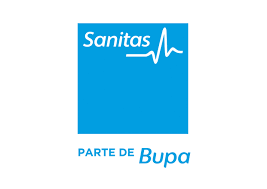| Company | Sanitas, Healthcare and well-being services |
| Training | Game-based learning: the first online training solution that does not require promotion |
| Skills Developed | Continuous Learning, self-confidence, coaching, communicating effectively, work-life balance, steady focus, change management, conflict management, innovation and creativity, leadership, negotiation, drive to deliver results, analytical thinking, planning, organizing and coordinating, problem solving, tolerance to pressure, decision-making, teamwork. |
| Program | Period: 2014 – Present. Trained employees: 326 |
| Serious Games | Merchants, Negotiation and Conflict Resolution Serious Game Triskelion, Serious Game on Time Management and Personal Productivity Pacific, Serious Game on Leadership and Team Management |
Overview
Gamification as an enticement, self-paced training as an incentive and enhanced engagement as the ultimate goal. Sanitas has succeeded in making game-based learning a useful tool and in harnessing the multiple advantages it offers for raising engagement levels within the company.
Gamelearn’s simulation courses in a game-based learning format were part of an overall plan that sought to enhance staff identification with the healthcare services company. An ambitious plan in which learning and training played a key role from the outset.
Challenges
- Represent real situations that enable employee development through a case-study learning model.
- Develop tools that are genuinely useful for teaching transversal skills. In other words, ensure the training could be applied to each job, regardless of the employee’s professional background or specialization.
- Find solutions that foster employee participation, motivate the staff to complete the training and provide a foolproof solution to the high drop-out rates experienced with other training models.
Solutions
- Represent real life situations using negotiation and time management simulators, thus putting employees in “real” situations in which they have to apply their skills, while receiving feedback and improvement tips.
- Impact on participant motivation. Because it is game-based, the learning process is different and engages the participant through the use of gamification techniques: rankings, badges, levels, etc.
- Ensure that employees can manage their own training.
- Offer a wide variety of new, non-technical skills that can be applied both to the participant’s personal and professional life.
Results
- Completion rate 92%
- Applicability rate 99%
- Increase in employee engagement + 9%



